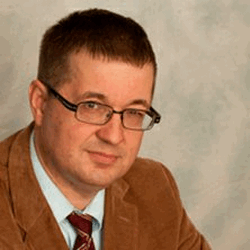Euro shows its peak value since December 2014: why currency rates are rising
Updated record highs
Currency auctions at Moscow Exchange on Monday began with a rise of the euro and the dollar against the ruble. The European currency already reached 93,8 rubles by 10 a.m. for the first time since December 2014 when the rate totalled 100 rubles. At 10.47, the euro rate at Moscow Exchange topped 94 rubles.
The euro has been fluctuating around 93 rubles for about a month already, on 29 September, it exceeded this digit and hasn’t descended since this time. While the dollar approached 80,8 rubles throughout the day, and it is also a record high in a few months.
The ruble reduces when oil prices fall. January Brent futures at London’s ICE cheapened by 3,2% on Monday. The barrel’s price amounted to $36,73.
85 rubles per dollar this year already
As chief economist of PF Capital consultancy Evgeny Nadorshin explained to Realnoe Vremya, the ruble cheapens following oil. He claimed that he saw nothing phenomenal that the dollar and euro reached the next record highs.

Head of Investment Analysis and Training Department of Univer Investment Group Andrey Vernikov paid attention to several facts influencing the fall of the ruble. The lockdown Europe’s largest countries are introducing causes a slowdown in production, which means lower demand for hydrocarbons. The Russian budget will also have to spend a lot to pay the public debt and to traditionally increment budget spending in November-December.

To stop the fall of the ruble, the Central Bank can apply currency intervention. The regulator has other instruments too.
“I don’t know how long the Central Bank can lower the rate. I think it is approximately two months. If oil prices are low by that moment, the CB will give up, and I don’t know what will happen next,” the expert said. He added that one couldn’t make forecasts at the moment: the US presidential election was ahead.
Kremlin doesn’t lose hope
Russia’s President Vladimir Putin literally predicted that new “summits” or, on the contrary, “bottoms” would be reached. The head of the country urged the citizens not to pay attention to the ruble rate as early as last week.
“I think here not even the rate but the predicted stability of this rate is important here. And the Central Bank together with the government in general manage to do it,” the president said.
On Monday, Press Secretary of the Russian leader Dmitry Peskov explained what Putin meant. So the official representative of the Kremlin told journalists that the majority of Russians received salaries in rubles. Moreover, the dependence on imports is reducing, which means the rate of the national currency isn’t influencing the Russians’ lives.
“You see, for instance, that psychological bars are reached, but the amplitude of this volatility is minimised by our macro-regulator’s efforts, and of course, any world currency is under serious negative pressure of a series of circumstances now in the world economy — the dynamics of energy consumption and so on, changes of prices for oil products and oil, all this has an influence,” Peskov said.